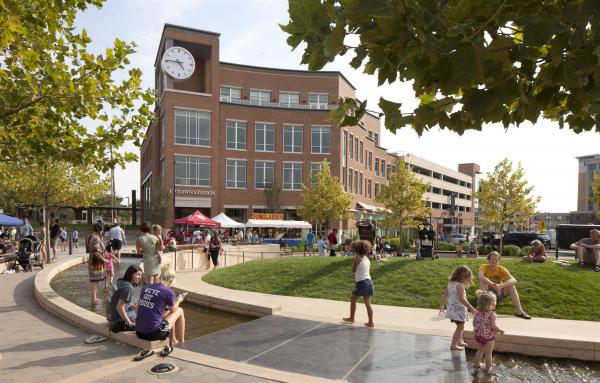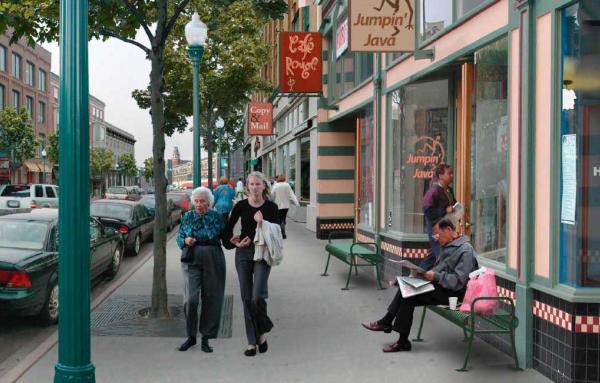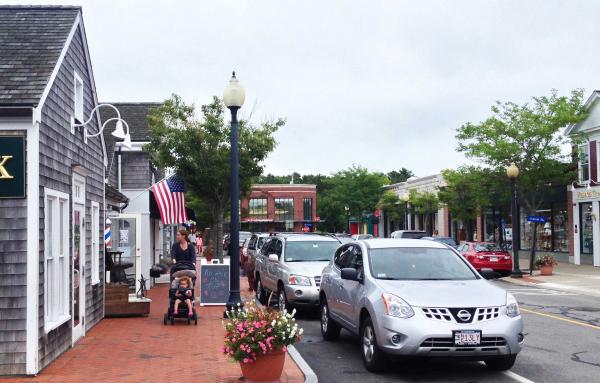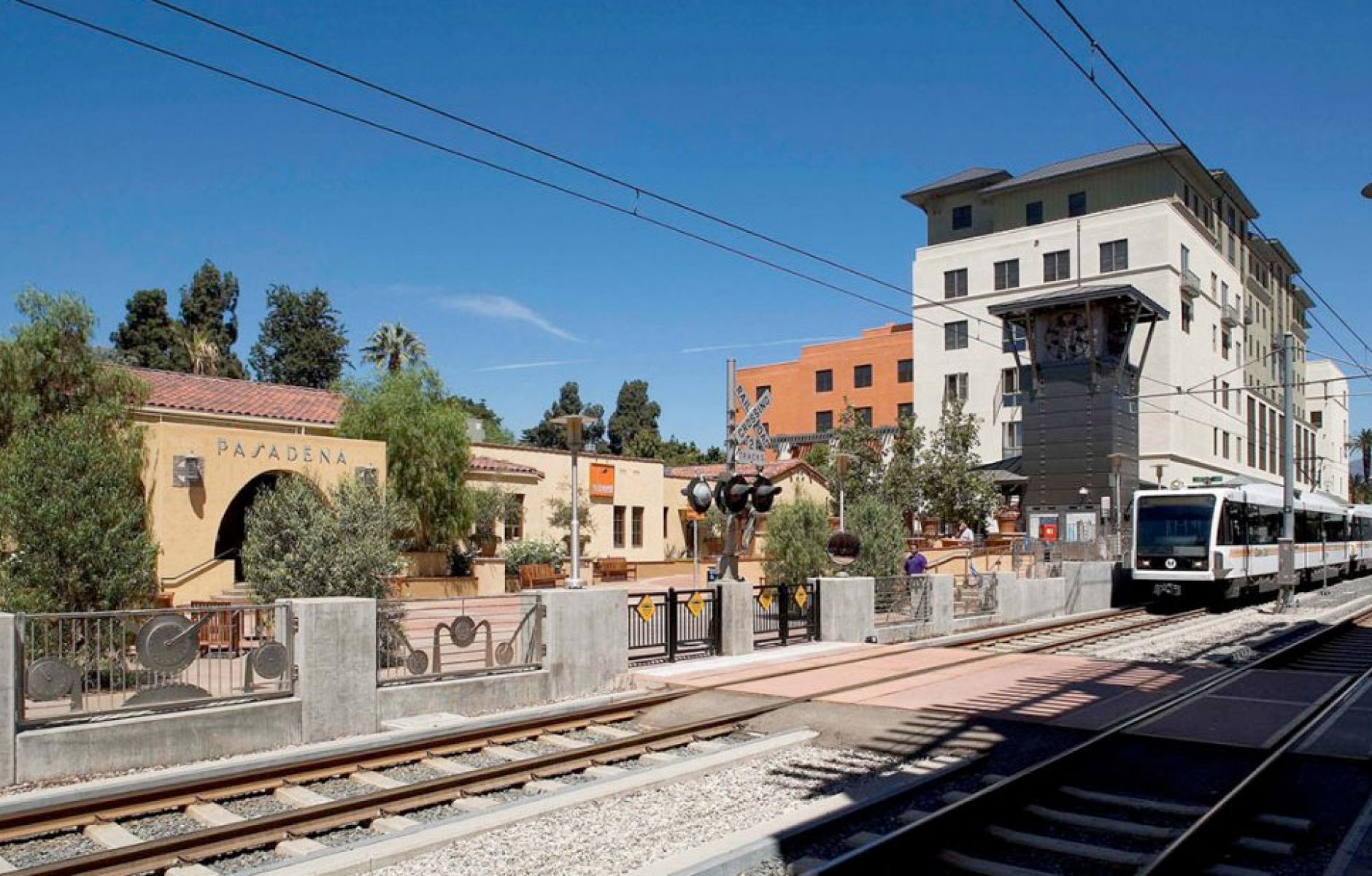
Great idea: Transit-oriented development
In celebration of the upcoming CNU 25.Seattle, Public Square is running the series 25 Great Ideas of the New Urbanism. These ideas have been shaped by new urbanists and continue to influence cities, towns, and suburbs. The series is meant to inspire and challenge those working toward complete communities in the next quarter century.
Transit-oriented development (TOD) was conceived in 1982 in an effort to link transportation and land use by architect Peter Calthorpe, a CNU founder, and was picked up by like-minded urban designers. A handful of projects linked transit to mixed-use walkable centers in the following two decades—and then TOD took off as a major real estate trend in the mid-2000s. TOD ranges from infill in the city to redevelopment of parking lots and grayfield sites in suburban areas. It is typically linked to rail transit—yet bus rapid transit may also provide a framework for complete communities.
Public Square editor Robert Steuteville interviews Christopher Coes, Vice President of Real Estate Policy and External Affairs at Smart Growth America, and Shelley Poticha, who leads the Natural Resources Defense Council’s Urban Solutions team, on current trends in transit-oriented development.

What is your definition of transit-oriented development?
Poticha: Transit-oriented development is the notion that we build our neighborhoods and our cities in ways that allow people to connect to other places in the region with transit in an easy and affordable manner. Transit-oriented development connects people and their neighborhoods to the places where they work, study, and live their lives so they don’t have to use a car for every trip.
Coes: In this era, transit-oriented development is the epitome of providing Americans the choice to live in communities and in regions that allow them to have the greatest flexibility of lifestyle, which transit allows for. It's not anti-car, but the choice between car, transit, walking, or biking.
Shelley, you were one of the authors of a book called A New Transit Town, which in 2003 was one of the first books to introduce people to the concept of transit-oriented development. How has transit-oriented development changed in the last decade and a half?
Poticha: Back when we wrote that book, the notion of transit-oriented development was a very foreign concept. There was a lot of talk about how we could attract developers to value transit as an asset. But there were very few examples where either the public or the private sector had purposefully chosen sites and organized their projects to take advantage of transit stations. Now communities all over the country are incentivizing development near transit that promotes that walkable space—essentially New Urbanism near transit. There are developers whose entire business plan is based on urban neighborhoods connected to transit. It's a hot commodity. In many communities, people now seek out the places that give them the greatest options for travel.
So the world has changed, essentially. Is that how you view it, Christopher?
Coes: I think the world is definitely evolving. There was a time when local governments, state governments and even the federal government viewed transit-oriented development as a niche market that no one did. Fast forward 20 years and these different level of government have recognized that transit-oriented development is part of a larger transformation of the country that's tied to demographics. Most recently, a lot of state and local governments have incentivized this development on a bi-partisan basis. But a lot of questions that are still unanswered. Because the shift from the demand for a drivable suburban development to more walkable compact transit-oriented development has happened so rapidly, it's had a massive impact in terms of locations of low-income families and certain types of businesses. It's had a spillover effect for second-tier cities like Louisville and Knoxville, who are seeing an increasing demand for walkable transit and have to put their own dollars toward building transit systems. There’s also the conversation of how to bring back the suburban communities that were traditionally car-oriented. And because of this national conversation around transit-oriented development, it's easier for a lot of rural communities to participate as well. Passenger rail has become increasingly part of that conversation as well as bus rapid transit. TOD is no longer focused exclusively on heavy rail.
A few days ago it was reported that transit ridership declined in most cities in 2016. Do you think this is a long-term trend, And what does it mean for transit-oriented development?
Coes: Last year at our national leadership summit in Boston, one of the largest investors in the transit-oriented development communities, Don Woods with Federal Realty, mentioned that while the market trends towards transit-oriented development, he invests a small portion of his company’s dollars in actual TOD. Everyone gasped and asked, "Why? You are the biggest player in this market. Why are you not putting all your dollars into this particular market?" In a lot of the legacy cities where we see TOD, whether it's New York, DC, San Francisco, he noticed a problem. While the demand for transit-oriented development is there, the maintenance of the system becomes a major issue. He doesn’t want to invest a billion dollars near a new station, if the line servicing that station is going to have delays, safety issues.
If it becomes unreliable, residents will no longer use transit as a primary form of travel. In communities like in DC with an aging metro system that is currently under repair, we see a drop in transit ridership because of the scale of repairs and its effect on service. That presents a challenge and the next great obstacle to transit-oriented development is to ensure that our transit is reliable and safe.
Poticha: This is why when we wrote The New Transit Town we said that the fundamentals of development still have to stand true, whether or not there is a transit stop. There has to be more than one reason for someone to rent, buy, or locate their business in a particular neighborhood.
There's also Uber, is there not? Technology has also changed things a lot.
Coes: Even Uber has been redefined as transit. Right now many transit benefits can be applied to Uber because its app now allows you to carpool with other customers heading to a similar location. From that standpoint, we have to rethink what transit actually looks like.
Poticha: Cities are evolving, and people are getting different choice options. I think the shared mobility space is definitely an area that transit officials need to pay attention to. I work with the Dallas Area Regional Transit and they're partnering up with ridesharing services to do last-mile connections after you exit the transit system.
At the same time that we wonder what's happening with ridership, transit-oriented development seems to be booming—is there a concern for TOD in all of this?
Poticha: One of the biggest challenges that transit-oriented development has to respond to head-on is the pace at which change happens in neighborhoods that are very attractive. What does that mean for people already living in those neighborhoods who feel the cost of living rising or the businesses already located there? In some ways this incredibly rapid change is really fantastic, but it's also creating a ripple effect, so as those neighborhoods mature and become more attractive, the cost of living there goes up and forces people who do not have the financial wherewithal to move to places that aren't as well connected to those transportation options. There's an equity issue here because historically those lower income riders are the backbone of the ridership system of transit. Now, because they cannot afford to live near transit, they're moving out to neighborhoods where you have to buy a car and pay a much higher proportion of your income to get around. If we don’t address this, we’re going to lack long-term support in some communities.
Coes: Not only is this change happening quickly, but the response from the public sector has been very slow., Since a neighborhood could be transformed in a matter of years, the public sector needs to develop the capacity to quickly identify populations that will be negatively impacted and provide them with the necessary resources to allow them to enjoy the new services and the improved quality of life that's coming to that neighborhood. Oftentimes we talk about equitable TOD because there's so much demand for TOD and people will pay higher prices to be in those communities. Naturally the conversation leads to how to protect the low-income residents and small mom-and-pop stores. At the same time transit oriented development is real estate in the built environment. I really want to hone in on how to ensure that local residents in zones of transit-oriented development have access to builders, developers, finances. We need to create a process which provides the local community with a pipeline of developers and builders instead of someone from the outside building a new project, i.e. pushing residents out. I think the next wave of discussion in TOD is to crowdsource this momentum so that the benefit is shared not only equitably but also allows for those local communities to generate wealth for themselves.
I see two aspects of this equity issue—one is to enable people who want to stay in a neighborhood to be able to afford to do that, and the other is to provide these transit services to the locations where some of the people who formerly lived in city neighborhoods are moving to—particularly the suburbs. How does transit-oriented development address these two challenges?
Poticha: I think that Chris' point about community empowerment and control is really important and helps address the first challenge. Community empowerment buildings the capacity of the community to be part of the change and involve small-scale developers. From a public sector point of view, we really need a much bigger toolkit for managing neighborhood change than we have now. One of the early themes of the New Urbanism was that the prices of living in a new urbanist community were often high because they were so attractive and the market drove prices up, as a symptom of imbalance between supply and demand. That's part of what we're talking about here. But we need transit authorities to understand that they have to embrace additional modes and provide more service than they have historically instead of focusing solely on the big, expensive, fixed-rail transit systems.
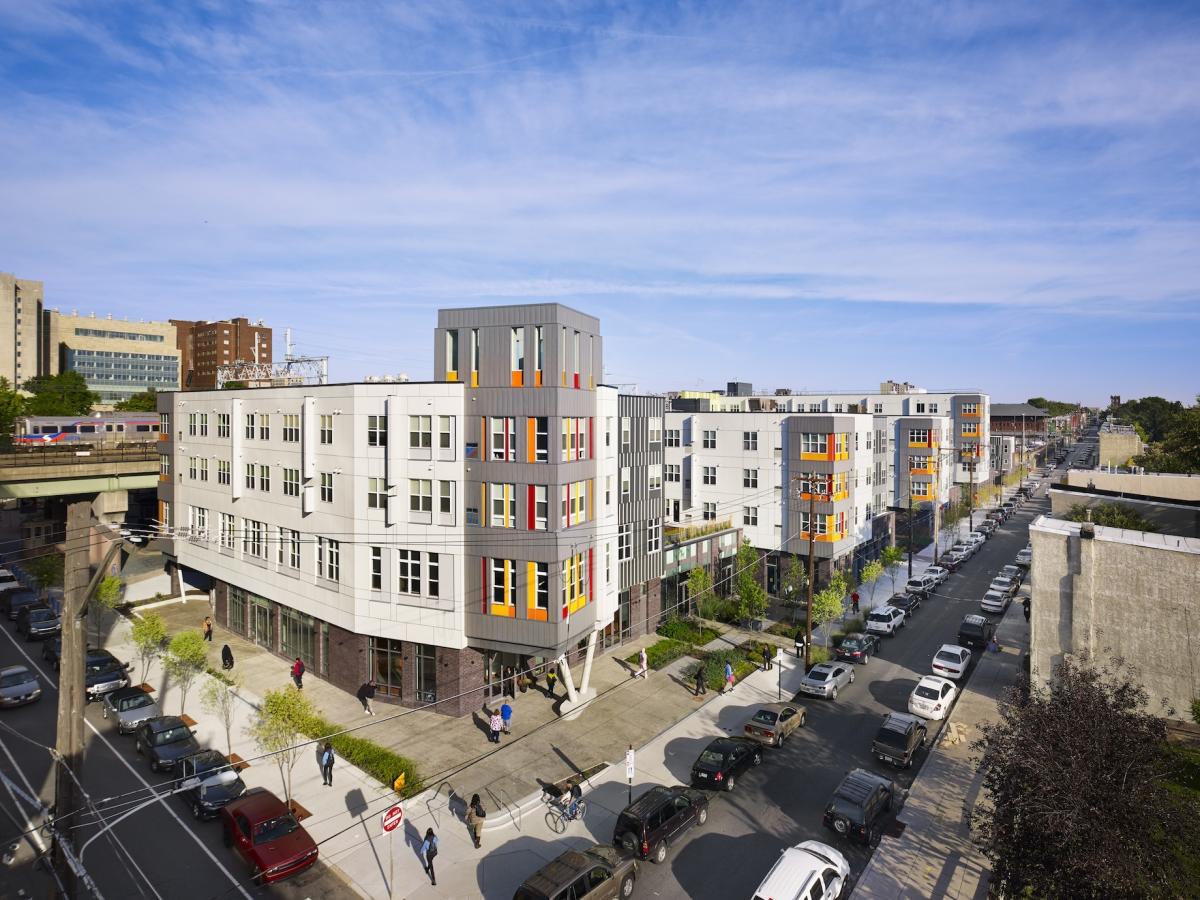
Coes: The same populations that have relied on transit and are being pushed out to suburban communities are also communities that are represented, either at the federal or state level, by members of Congress or policy makers who have been, traditionally, opposed to transit investments. For the communities that need these services, there is going to be a major lag. This is going to become one of the biggest issues: more and more communities trapped in this cycle of poverty and disconnect. Increasingly, however, we are seeing the business community engaged in these conversations. Some smaller cities, once again like Knoxville and Louisville, can have leverage the demand for transit-oriented development into an economic development opportunity. They advertise themselves as more affordable versions of the larger cities. The question is: Can it create a sufficient market for individuals who cannot be in the high-cost cities with transit oriented development to still enjoy that type of lifestyle in a more affordable community?
As sprawling cities expand their transit—and I'm talking about places like Phoenix or San Jose or Houston or Columbus, Ohio— they often don't have the urbanism to go with it. I read recently about a transit village in San Jose that is underperforming expectations. And I looked at the plan, and there's density but no urbanism. How big of a problem is this?
Coes: In San Jose, for example, because the demand for TOD is high and many communities don’t recognize it as a potential successful model for economic development, other communities that do not have a staff with the technical understanding to make TOD work are trying to replicate what they've seen across the country. But let's not forget that many of these communities are still struggling from the biggest economic downturn we've seen in this lifetime and are still trying to day-to-day function day-to-day with fewer dollars. They’re beginning to rely more on the private sector, which is also learning again how to build walkable urban spaces. Unfortunately these bad TOD locations drive up the price of good TOD locations because they’re more attractive. We have to ensure, that the quality is definitely universal across the country.
Poticha: Even in places with a really strong market, like neighborhoods in San Jose, there could be complications that lead to inaction. Sometimes the transit agency owns the property and they only invest in parking lots around their stations. Sometimes because of past infrastructure investments and the jurisdiction over local streets, it's very hard to get from the site to the station, and that becomes a real disincentive for any developer who wants to build and make a place walkable. Oftentimes it can be tied back to the lack of local leadership willing to work with all the stakeholders to resolve the challenges.
Is this still a common story with transit-oriented development around the country, or is this the exception? Are municipalities getting it, or are a lot of them missing it in terms of how these places should function in their design?
Coes: There's still a lot of trial and error. Unfortunately, TOD is not a developed product that can be applied with a template because it has to respect and respond to the local conditions where it is being implemented. Right now, we're in a space where we are relearning beginning to find out that different TOD projects require different policies, incentives, levels of community engagement, and so forth.
A lot of developers are getting into TOD that focused on single-use automobile-oriented development before. What are the biggest challenges for those developers and how can they address those concerns?
Coes: The challenge is a three-headed monster. First, the local zoning. That will, without a doubt, still be one of the biggest barriers to good transit-oriented development. A lot of communities still have regulations that lead to a car-oriented developments, which often make it difficult to do mixed-use project near a transit station or to reduce parking regulations. Second, TOD projects have a different financing structure than conventional real estate projects. Even now in the federal government, there are new incentives that are supposed to reduce that financial challenge, but TOD projects generally take a long time to make a buck versus your conventional financing. Finally, there’s the community engagement aspect. Now you are beginning to find opposition in the community that is either detached from the project or this change, or recognize the change and are trying to prevent the change from coming to their neighborhoods. Those three aspects are all part of the same monster, which prevents supply coming to the market.
What are the biggest concerns for public officials who want to create successful transit-oriented development or developments? And how can those concerns be addressed?
Poticha: There are two parts to this. A very major reality is that a hub that connects people to other places in the region has the opportunity to be a place where a lot more can happen than in a traditional residential neighborhood. Community centers, grocery stores and other kinds of businesses are really well suited to being hooked up to the major spine of the regional transit system. The challenge is that often some of the "amenities" that community leaders would like to have in these transit-oriented locations don't have a revenue stream. They can't necessarily be absorbed into the cost of the development because land prices or the other infrastructure costs that are being borne by the developer make a project infeasible. In places where you have a public leadership that sets a priority on making great public spaces, encourages the kind of facilities that community leaders want, and works creatively to find ways to pay for those amenities, only there do you see the real partnership and a real sense of conviction that enables the public sector deliver on this larger vision.
Which of the amenities that you're talking about are most important?
Poticha: Streets that are pleasant to walk and bike along are essential in a transit-oriented development, but often the public sector have looked at TOD as strictly private property rather than public and private. Parks, and community facilities, and the same kind of amenities that you'd want to have in a great urban neighborhood need to be in a transit-oriented neighborhood. But the costs are very high.
Coes: On the social equity side, oftentimes TOD exposes what's already happening on the ground, whether it's lack of education access, lack of job training, and so forth. Those are issues that can't be solved by TOD, but could be leveraged by TOD. Increasingly TOD has been a part of the conversation about value capture. The idea is that because there's so much economic activity happening around the station you should capture those dollars and it should be put back into transit, but increasingly there are other demands like housing, job training, other public infrastructure or public health projects, that it can be applied to
How much transit-oriented development is happening in the suburbs? And what are the special concerns there?
Coes: Smart Growth America and George Washington University’s Chris Leinberger have conducted a number of studies across the country, evaluating metropolitan areas in terms of their TOD locations. In DC we see that almost half, 49 percent, of TOD in the region has happened in the suburbs and it's largely because the region as a whole has embraced transit. In places where the region as a whole has not embraced transit, most of the TOD locations are populated within the city. An example is Atlanta, where generally speaking the suburbs have turned their backs on transit but, right now, most of the TOD is happening inside the city. But in Detroit, there was an attempt to pass a regional pact to build out a regional transit system. It passed in the city, but it failed in all of the surrounding counties. However, I believe there's going to be momentum for a lot more suburban communities to embrace transit and therefore TOD because it's part of their survival. They're seeing a decline in property values. They're seeing that companies are no longer choosing their locations because they lack amenities or the types of development that attract talent.
What are some more innovative and successful transit-oriented developments that both of you have seen lately?
Poticha: I recently went on a tour of the Anacostia neighborhood on the southeast side of DC. This is an area that has a stop on the Metro line. But long-term issues involving race have inhibited the level of investment we've seen in the northwest part of DC. One of the things that is incredibly impressive in Anacostia is how community leaders have begun the engagement process very early, not only to embrace the idea of change but to actively manage it. There are proactive efforts under way to help ensure that housing remains affordable for folks who live in that neighborhood even as new development comes in. It's a big work in progress, but it really felt like it was a community-led effort more than a developer-led effort.
Coes: There are two new innovations in TOD that excite me. First, there's a new answer to questions concerning parking. Recently, I saw a parking garage that was designed to be converted at a future date into housing and commercial space. That provides an answer to the question of what to do with parking garages that no longer needed in these great walkable neighborhoods. The second development involves the Greenway project in the Chinatown neighborhood of Boston. Through their financing, they provide affordable commercial space for those culturally sensitive or niche businesses. On the housing side, we have tools like the LIHTC (Low Income Housing Tax Credit) program or the HOME program that can provide dollars for affordable housing, but we don't have an equivalent for commercial space and that's a big issue.
What differentiates the communities that are succeeding with transit-oriented development and those that aren't in your view?
Coes: Communities with good TOD projects and neighborhoods approach TOD in a holistic manner versus in a silo. They think of it not as an infrastructure issue or development deal, but they're thinking about its impact on public health and community. An engaged development community is another attribute of communities that have good TOD. For instance in DC, the development community gets TOD and they all talk the language. But in communities with a development industry that prioritizes greenfield development, it generally doesn't bode well. But there are those successful communities that go out to other communities to do site visits and tours, that apply for EPA grants and technical assistance, that are willing to get someone from the outside to teach them how to do better.
Note: CNU intern Benjamin Crowther helped to produce this interview and article.





